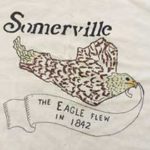
Eagle Feathers #244 – The Forgotten
By Bob (Monty) Doherty
It wasn’t long ago that a stately animal worked as a lifeline to our civilization transforming communication, farming, construction and power. He has been with us for over 4,000 years working alongside man sharing his strength and stamina.
He’s the beloved horse. His one-horsepower eclipsed the might of ten men. Once tamed and harnessed, he became man’s worker, entertainer and friend. As a worker, his cultivating devices went from plows to wagons to machinery. As an entertainer, he became a saddle horse or racer. As a friend, he was himself.
*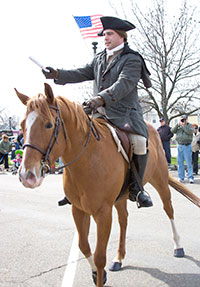 *
*
- Colonial horses arrived in New England between 1629, the year Charlestown was founded, and beyond. Rhode Island’s Narragansett Bay Pacer was the first American-bred horse. It was the breed which patriot Paul Revere rode to Lexington. Sadly, the breed is now extinct.
- The building at 90 Union Square, Barristers’ Hall, boasts an impressive mural of a mounted General George Washington. He sits astride his favorite horse, Nelson, encouraging his troops at the first American flag raising. This event took place 226 years ago on January 1, 1776 on Prospect Hill.
*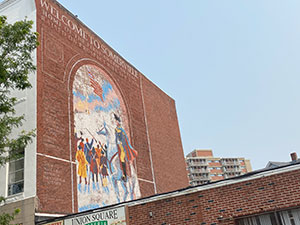 *
* - During the early 1800’s, Colonel Samuel Jacques owned the biggest farm in Somerville. It was the 600-acre Ten Hills Farm. He once owned some of the best trotting horses in the country. For sport, his game was fox hunting. This is where his horsemanship shined. He loved the sport of kings. In the morning, he treasured the sound of horses, hounds and horns. Tally-Ho!
- On the Mystic’s shore in 1850, James Pierpont wrote the famous Christmas song, Jingle Bells. He jotted it down at the Simpson Tavern while observing horse-drawn sleigh races out of Medford Square.
*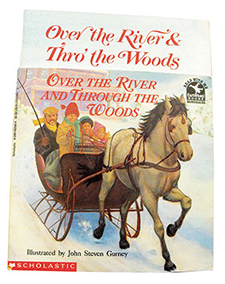 *
* - The Civil War brought Camp Cameron in West Somerville (Davis Square to beyond Teele Square) into existence. Troops were trained there for the Union Army, and cavalry horses were trained in the Powder House area.
- The war brought change to the Fire Service as well. Before the war, lightweight fire apparatus was mostly hand drawn. Heavy steam engines then became the norm and with them came the powerful horses that would pull them. They came into the spotlight and became the pride of their cities and towns. The best horses available were purchased. Training was rigid and their feed, grooming and exercise was superior. This most romantic era of firefighting spanned over fifty years.
*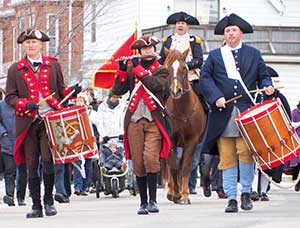 *
* - Until the advent of the railroad, part of our horses’ local history was their relationship with the Middlesex Canal as it flowed through this town. For eleven years, horses helped dig the 27-mile, man-made river which linked Boston to Lowell and the Merrimack River to the Charles River. After its completion in 1804 and for another half century, they towed canal boats filled to the brim with supplies.
Today, you would be hard pressed to see a horse in Somerville. Mounted re-enactors on Patriots and New Year’s Day still draw curiosity, but that’s it. Today, many people have never seen a live horse, and the residents who remember Davis and Union Square equine traffic jams have dwindled. The horses are gone and almost forgotten.
*
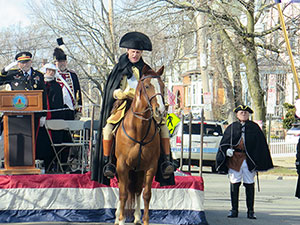 *
*
The Forgotten … who are they? They built our roads and avenues. They helped build our houses, parks, buildings and bridges. They delivered our goods, plowed our hills and fields and provided pleasure and entertainment. Growth and progress have overcome the horse in Somerville and elsewhere. Time has brought Somerville from a quaint one-horse town to a stampeding city. Through their names and adornments, several restaurants in the city have kept the memory of man’s second-best friend alive … the horse!















Reader Comments